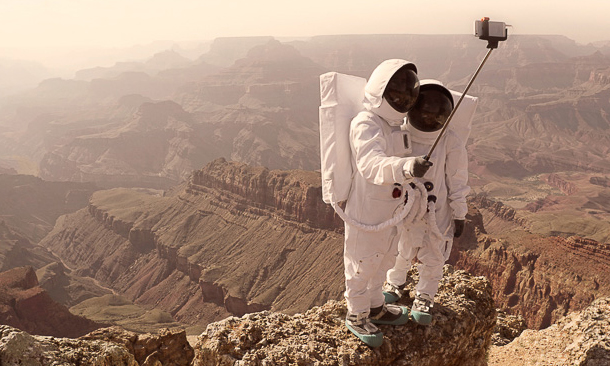Tourism on Mars ! Does this sound unbelievable to you ? It shouldn’t, because living in this 21st century we have already seen many impossibles have actually been materialized and for this we must thank today’s science. Conquering the Moon, stepping into the Red Planet and attempting to explore the Sun, astronomy enabled us to believe that days are not far away when we will plan tourism on Mars.
The Red planet treasures many historic places in its geographical region for its visitors. Here is the snake peek :
The North Pole :
As the name specifies, North pole is the coolest place of the planet and is mostly covered in water ice and solid carbon dioxide or dry ice. Geographically the region is bigger than Texas.  Kasei Valles :
Kasei Valles :
Towards the south there is Kasei Valles which is a huge chasms being five times longer and 10 times wider than the Grand Canyon, USA and scientists assume it is formed in a similar way.
They believe billions of years ago, Mars was warmer, and was covered with liquid water, which may carved out valleys like this one.
Mawrth Vallis:
Mawrth Vallis is adjacently placed to Kasei Valles and its multicolored layers of clay gives it a different look. These layers might be formed being deposited over millions of years when the climate of Mars was turning colder, drier. Probably these could trace into the history of liquid water and possible ancient life on Mars !
Bacquerel Crater :
Bacquerel Crater is a rocky place in Mars which is made of sulfate, similar to some areas on Earth that form after water evaporates. Therefore scientists suspect that this crater may once have been a massive lake over 160 kilometers wide.
Iani Chaos :
The next destination is Iani Chaos. Spreaded over 200 kilometers, it is a is a region of chaos terrains. Since there is no region like it on Earth, scientists aren’t exactly sure how these unique features formed. Most probably it is formed via the removal of subsurface water or ice, as believed the scientists.
Its larger neighbor, Hydraotes Chaos, possibly formed in a similar mysterious way. It is stretched upto 350 kilometers, equal to the distance between New York City and Boston.
Valles Marineris :
Being the largest canyon in the solar system, the Valles Marineris is one of the greatest attractions on Mars. The amazing fact about the place is its length which measures equal to the length of New York to Los Angeles, and it’s plunging depth which is four times deeper than the Grand Canyon.
Hebes Chasma :
Proceeding with the route you will reach Hebes Chasma. It is a depression just north of the enormousValles Marineris canyon. Since the depression is not connected to other surface features, it remains unsolved that where the internal material went. Though it’s smaller in size as compared to that of Valles Marineris, still the place is worth visiting for holding prominent mesas of the chasmas.
Olympus Mons :
Your trip to Mars would be incomplete if you wouldn’t visit Olympus Mons. With a height of nearly 25 km as measured by the Mars Orbiter Laser Altimeter, it is the tallest volcano in the solar system. It covers an area that equals the size of Arizona. Olympus Mons is about two and a half times of Mount Everest’s height above sea level and can snuggly fit all the volcanoes in Hawaii.
Promethei Planum :
Now coming towards the south, the attraction that you find is Promethei Planum. It is an area that is seasonally covered with a more than 3500 m thick layer of ice which is nearly one and a half times thicker than the East Antarctic Ice Sheet.
Rabe Crater :
Then comes Rabe Crater, a tourist attraction which is covered with 150 to 200 meters high giant sand dunes. These dunes are approximately as tall as the Golden Gate Bridge.
Neukum Crater :
This is the oldest region of Mars dating back to 3.9 billion years ago. Scientists think this crater took shape from a powerful impact early in Mars’s history. In fact, the pockmarks left by the crash can be noticed now. As per the name of a German physicist and planetary scientist Gerhard Neukum, the carter got its name. The scientist passed away in 2014.
With all these mind-blowing views and much more, the Martian landscapes might just take your breath away.

